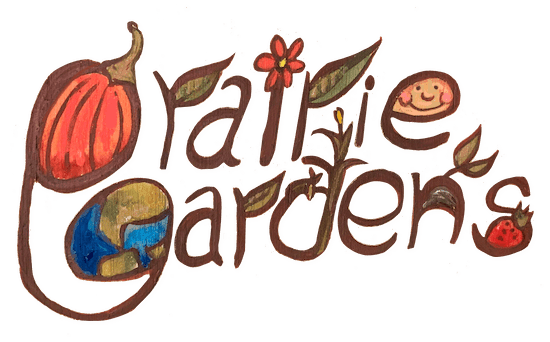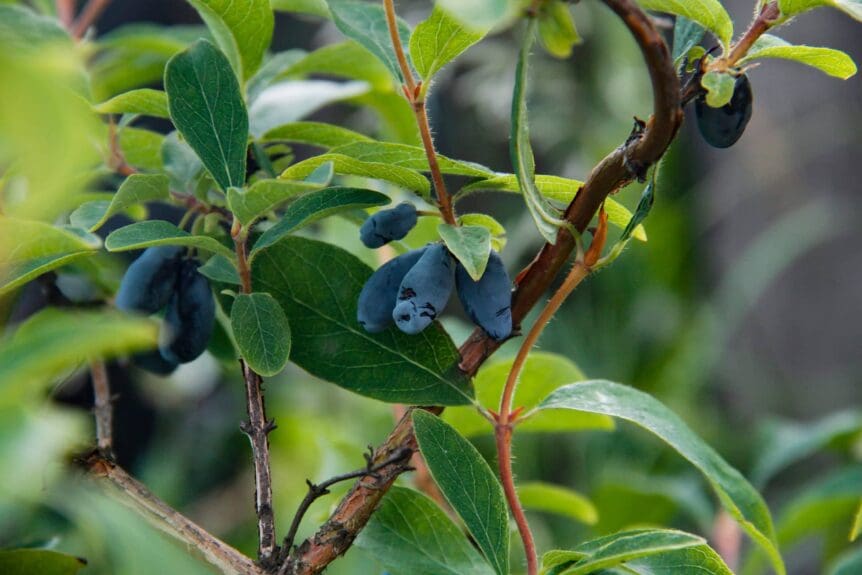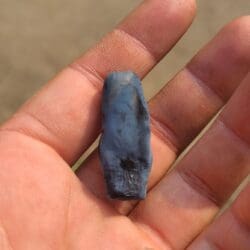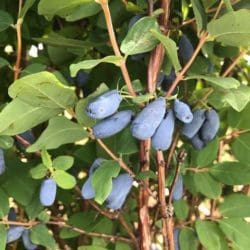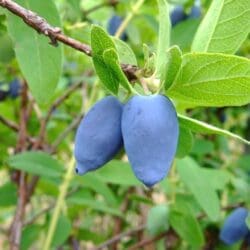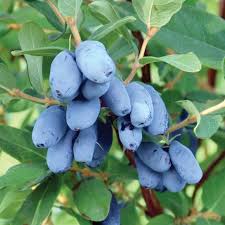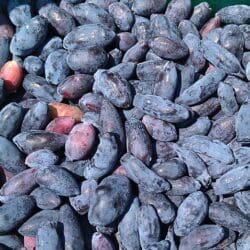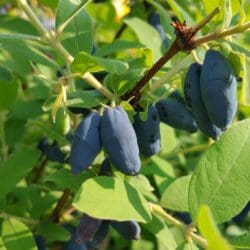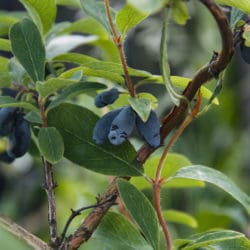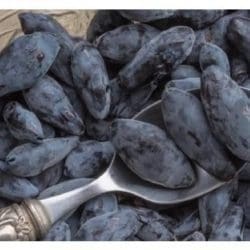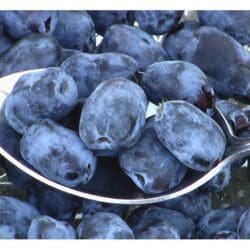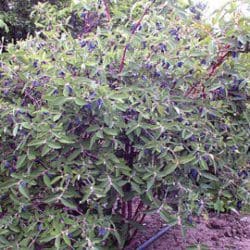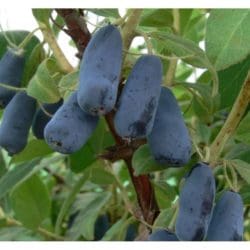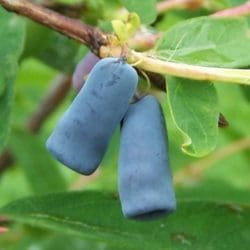Are you growing haskap berries yet?
If you’re not yet familiar with these cigar shaped berries, they may soon become your favourite fruit in your garden. With a flavour similar to a wild huckleberry crossed with a blueberry – they are juicier than Saskatoons, tamer than raspberries, and lower-maintenance than blueberries or strawberries. These amazing little berry shrubs have become rock-hardy staples of the Edmonton garden.
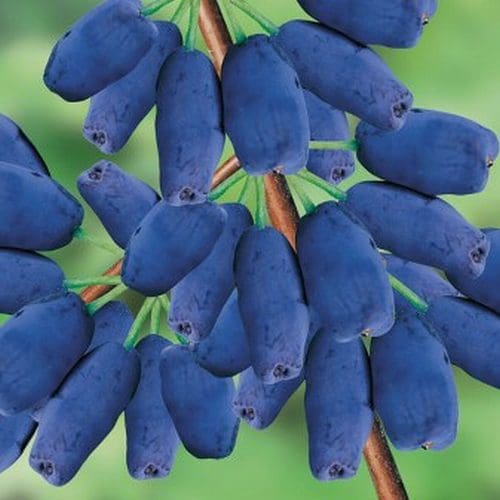

Haskap berries (Lonicera caerulea), also known as honeyberries, are similar in colour to blueberries and but have a shape like a mini cigar. The plants are actually related to the honeysuckle family that grows natively throughout North America, Europe, and Northern Asia. The berries of the wild plants have been popular in Japan for centuries; in fact, the word ‘haskap’ is Japanese for “berry of long life and good vision.”
Modern-day “honeyberries” were developed at the U of Saskatchewan, by plant breeder Bob Bors. He crossed the Japanese haskap with the Russian Honeyberries. Through extensive breeding, the U of S was able to produce an ideal crazy hardy to -40C shrub for Alberta Gardens.
Haskap Berries in your Yard
Unlike brambles, which tend to have wild spreading habits, haskap shrubs are a well mannered garden plant. Rarely exceeding 2 metres in height or width, they grow into tidy, rounded shrubs that fit handsomely in tiny urban gardens. If you’ve longed for a fruit-producing tree or shrub for your townhouse garden, you’ll be happy to hear that two bushes can easily fit in the space a single apple tree would take!
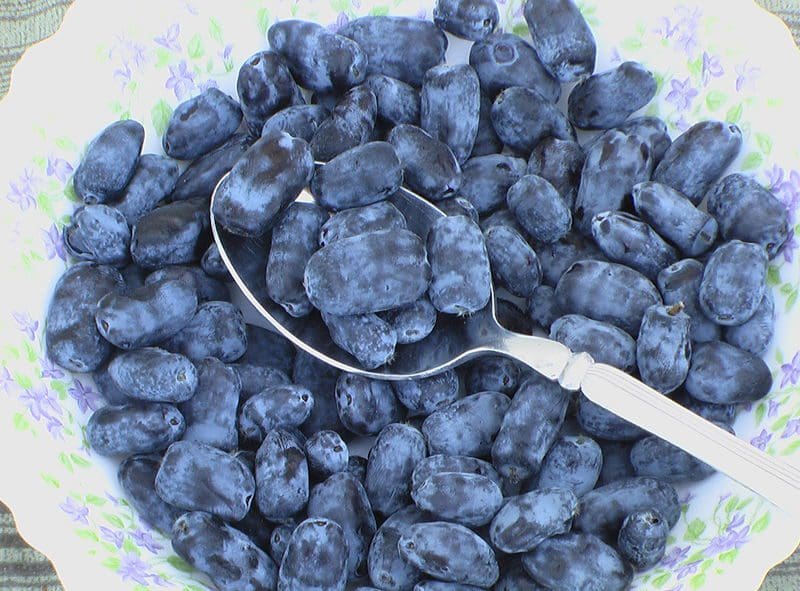

Due to their cute size, they are well-suited to mixed perennial borders. Their lovely little yellow trumpet-shaped flowers are frequently visited by bumblebees and honeybees as the first blossoms in the spring – which is good as the shrubs do require cross-pollination for fruit to set! They are the first berry in the garden- ripening in late June. Haskap fruits obtain almost full size 4 weeks after blooming and begin to turn purple. At 5 weeks old they are fully purple but at 6 or 7 weeks old they are fully ripe and tasty.
For the longest harvest season – plant a combo of all the varieties listed as “Good” in the chart below!
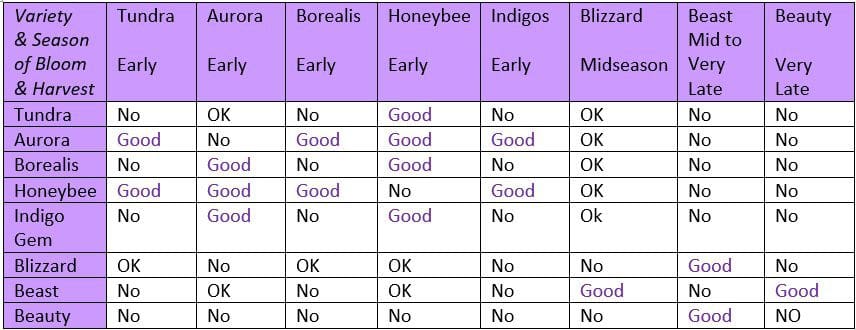

Note to Self: You may need to net them, as the birds are delighted to discover them in your garden!
Haskap Berries in the Kitchen
To the delight of most people who try them, the fruit is often described as a mixture of a blueberry and raspberry. However, it has also been compared to other antioxidant rich dark berries such as red grape, black currant, Saskatoon berry or chokecherry. The fruit is quite sweet, fairly tart, slightly astringent, and delightfully juicy. Varietal flavours vary. Originally Aurora was grown as a cross pollinator for Borealis. The test of time has proven that, in fact, Aurora is the preferred variety of chefs. The brix (or sugar levels) are the same in both berries, but the acidity is notably less in Aurora – making it taste much sweeter than all the others! The berries are very high in vitamin C, and like many purple fruits, contain high levels of antioxidants. The berry size of the Boreal series (Blizzard, Beast and Beauty) is almost double that of the earlier series, making it the preferred series for serious jam and pie makers!
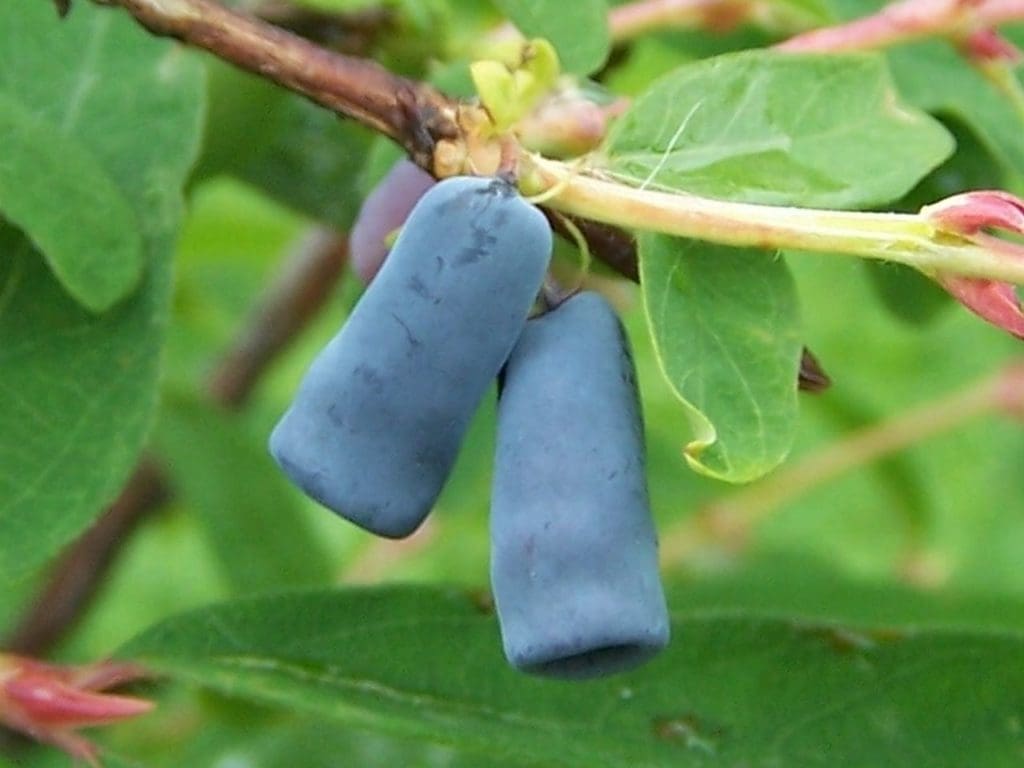

You can enjoy your “honeyberries” raw, dried, or press them for juice. They make fabulous jellies and jams, can be used like blueberries in baking recipes, and make great additions to smoothies. They’ve even been incorporated into ice creams and meads!
Growing Haskap Berries in Alberta
These berry bushes thrive in our soil and climate, they are easy to grow! The plants are hardy to -40C. The flowers are hardy to -7C. Simply choose a location with at least 6 hours of sun exposure and prepare a planting hole with good black topsoil. Water newly planted shrubs well and water them when they are dry (do not overwater) until established. Haskap shrubs are hardy to zone 2 and more tolerant of wet conditions than other fruits, so once established, they’re fairly self-sufficient, and tolerant of heavy clay soils.
To keep haskaps well-fed, fertilize with an all-purpose, rose, or fruit and berry-specific water soluble fertilizers monthly in May.. Organic fertilizers are also a great option. Fertilize no later than mid-May as late feeding will delay the plant’s ability to prepare for winter.
Haskaps Available in Our Shop
Aurora Haskap Berry
$19.95 – $54.95 Select optionsBoreal Beast Haskap Berry
$19.95 – $34.95 Select optionsBoreal Beauty Haskap Berry
$19.95 – $34.95 Select optionsBoreal Blizzard Haskap Berry
$19.95 – $34.95 Select optionsBorealis Haskap Berry
$19.95 – $54.95 Select optionsHoneybee Haskap Berry
$19.95 – $34.95 Select optionsIndigo Gem Haskap Berry
$19.95 – $34.95 Select options
